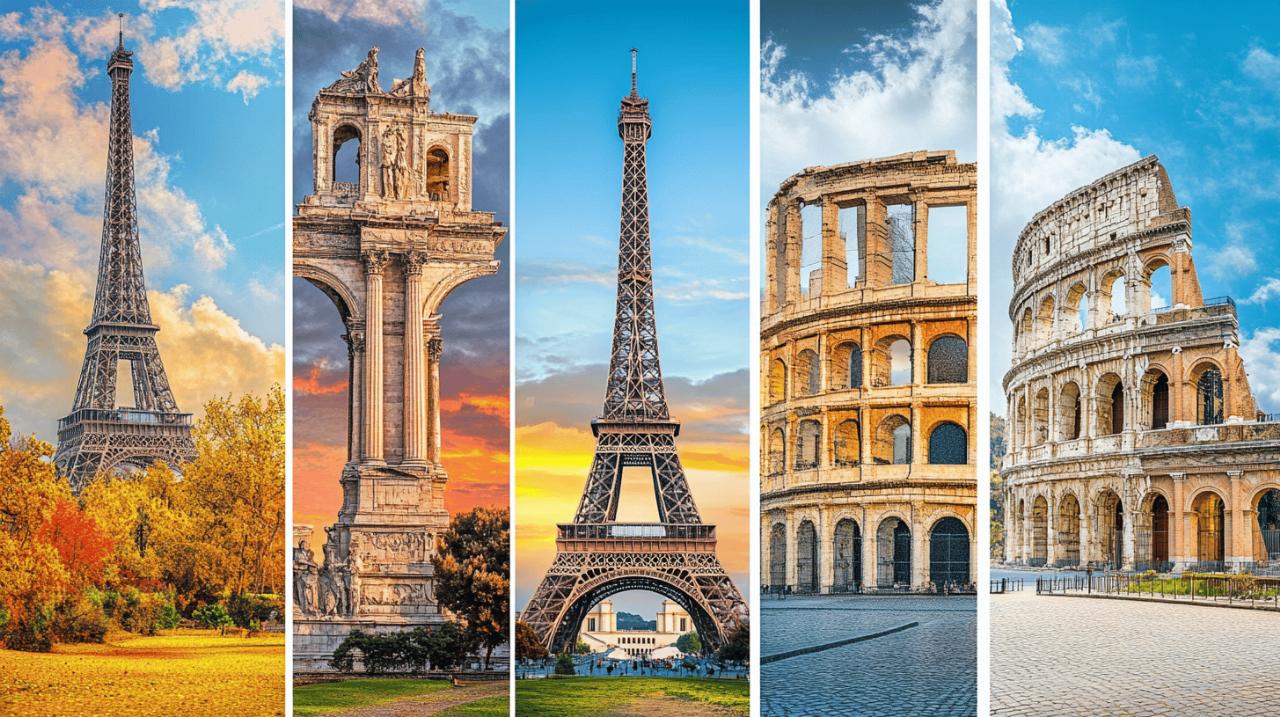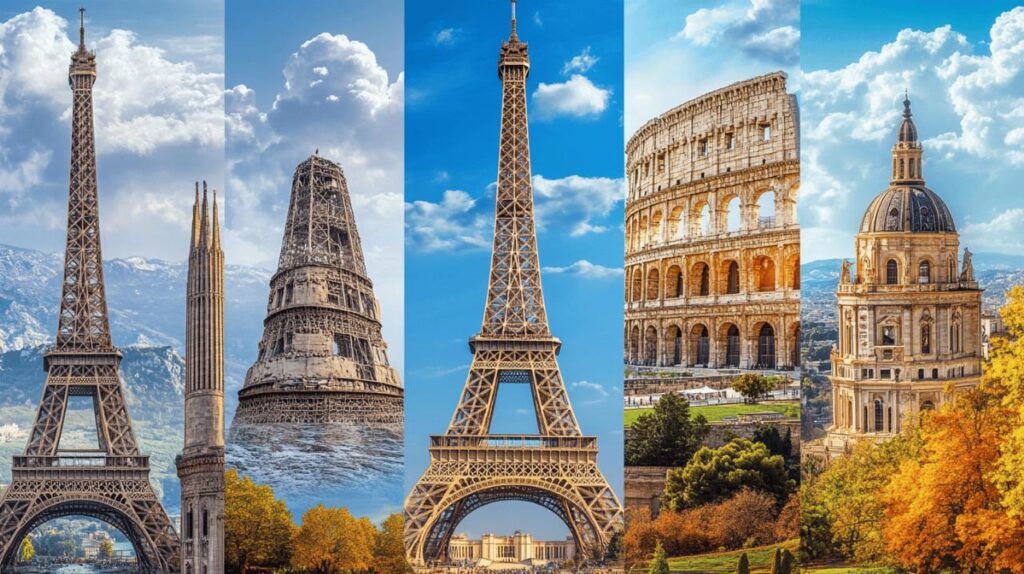Europe boasts a wealth of historical monuments that showcase the continent's rich cultural heritage and architectural brilliance. From ancient amphitheaters to medieval castles, these structures stand as testaments to European royal power and ingenuity throughout the ages. Let's embark on a journey through time as we explore the most impressive historical monuments in Europe, starting with Rome's iconic Colosseum.
The majestic colosseum: rome's imperial legacy
The Colosseum stands as the crown jewel of Roman architecture and a symbol of the empire's might and sophistication. Built between AD 70-80, this massive stone amphitheater could accommodate up to 80,000 spectators, making it the largest of its kind ever constructed. The structure continues to captivate millions of visitors annually, offering glimpses into the grandeur of ancient Rome.
Architectural marvel of ancient rome
The engineering prowess displayed in the Colosseum's design remains remarkable even by modern standards. Its distinctive elliptical shape, four stories of arched entrances supported by half-columns, and complex underground chambers showcase the Romans' architectural ingenuity. The building employed innovative construction techniques including concrete foundations, travertine limestone façades, and an elaborate system of elevators and pulleys that allowed for dramatic scene changes during spectacles.
Gladiatorial contests and roman society
The Colosseum served as the center of Roman entertainment where gladiator battles and wild animal hunts were the main attractions. These spectacles weren't merely for amusement but reflected Roman social structures and political power. Emperors hosted these events to gain popularity among citizens, demonstrate their generosity, and reinforce social hierarchies. The precise seating arrangement mirrored Roman society itself, with the emperor, senators, nobles, and common citizens each assigned to specific sections based on their status.
The iconic eiffel tower: symbol of parisian elegance
When exploring Europe's most magnificent historical monuments, the Eiffel Tower stands tall as an unmistakable symbol of France and one of the most recognizable structures worldwide. Located on the Champ de Mars in Paris, this iron lattice masterpiece welcomes millions of visitors annually who come to marvel at its grandeur and experience its cultural significance firsthand.
Engineering Triumph of the 19th Century
Completed in 1889 for the Exposition Universelle (World's Fair), the Eiffel Tower represents a remarkable feat of 19th-century engineering. Named after its designer, Gustave Eiffel, the tower was initially met with criticism from Paris's artistic community but quickly became beloved by both locals and tourists alike. Standing at 330 meters tall, it held the title of the world's tallest man-made structure for 41 years until the completion of the Chrysler Building in New York. The tower's construction involved 18,038 pieces of wrought iron and 2.5 million rivets, showcasing the innovative spirit of the Industrial Revolution. The precision and technical expertise required to create such a monument makes it a prime example of architectural achievement that continues to inspire engineers and architects globally.
Panoramic views and cultural significance
Visitors to the Eiffel Tower can ascend to three different levels, with the top platform offering breathtaking panoramic views across the stunning Parisian landscape. On clear days, visibility extends up to 70 kilometers, allowing guests to appreciate the city's layout and spot other famous landmarks such as Notre Dame Cathedral (reopening in December 2024 after the devastating 2019 fire), the Arc de Triomphe, and the Seine River. Beyond its status as a tourist destination, the Eiffel Tower has embedded itself deeply in French cultural identity. It serves as a backdrop for national celebrations, light shows, and significant events. The tower's nightly illumination, featuring 20,000 bulbs that create a sparkling effect, has become an integral part of Paris's charm and nighttime allure. For travelers planning their 2024 Europe travel itinerary, this iron giant represents not just an architectural monument but a gateway to understanding European heritage and the artistic spirit of France.
The ancient acropolis: cradle of western civilization
 Perched high above Athens, the Acropolis stands as a testament to the ingenuity and artistic brilliance of ancient Greece. This UNESCO World Heritage Site represents the pinnacle of classical Greek thought and architecture, dating back to around 500 BC. The Acropolis wasn't just an architectural marvel – it was the physical manifestation of a civilization that pioneered democracy, philosophy, and the arts that would shape Western culture for millennia to come.
Perched high above Athens, the Acropolis stands as a testament to the ingenuity and artistic brilliance of ancient Greece. This UNESCO World Heritage Site represents the pinnacle of classical Greek thought and architecture, dating back to around 500 BC. The Acropolis wasn't just an architectural marvel – it was the physical manifestation of a civilization that pioneered democracy, philosophy, and the arts that would shape Western culture for millennia to come.
The parthenon and classical architecture
The crown jewel of the Acropolis is undoubtedly the Parthenon, dedicated to the goddess Athena, patron deity of Athens. This magnificent temple epitomizes the perfection of Doric order architecture with its harmonious proportions and optical refinements. Built between 447-432 BC under the guidance of architects Ictinus and Callicrates, the structure showcases the Greeks' mastery of mathematics and aesthetics. The marble columns, once vibrant with painted details, demonstrate the exceptional craftsmanship of the era. The Parthenon's architectural influence extends far beyond Greece, inspiring countless government buildings, museums, and monuments across the globe. Visiting this extraordinary structure allows travelers to witness firsthand the architectural principles that continue to define our understanding of beauty and balance.
Greek philosophy and democratic roots
The Acropolis complex served not only as a religious sanctuary but also as the symbolic heart of Athenian civic life. During the Golden Age of Athens under Pericles' leadership, this sacred hill became the physical embodiment of Greece's contributions to human thought. The surrounding area hosted philosophical discussions where thinkers like Socrates, Plato, and Aristotle developed ideas that form the foundation of Western philosophy. Athens also gave birth to the world's first democratic system, where citizens gathered to debate and vote on matters of state. The Acropolis stands as a powerful reminder of these revolutionary concepts that emerged from Greek civilization. Walking these ancient grounds offers visitors a unique opportunity to connect with the birthplace of democratic ideals and philosophical inquiry that continue to shape modern societies.
British Historical Treasures: Stonehenge and Tower of London
Britain houses some of Europe's most fascinating historical monuments that showcase the rich tapestry of human civilization. Among these treasures, Stonehenge and the Tower of London stand as iconic symbols of British heritage, drawing millions of visitors annually who seek to connect with the past. These remarkable sites offer glimpses into different periods of history—from prehistoric mystery to medieval royal power—making them essential destinations for anyone exploring European landmarks.
Mysterious stone circles of prehistoric britain
Stonehenge, located near Salisbury in the UK, ranks among the world's most famous prehistoric monuments. Dating back at least 5,000 years, this enigmatic stone circle continues to captivate archaeologists and visitors alike. The massive standing stones, some weighing up to 25 tons, were transported from quarries miles away and arranged in a circular pattern that aligns with solstices and equinoxes, suggesting astronomical significance. The construction methods remain largely unexplained, especially considering the limited technology available to its Neolithic builders. Walking around this UNESCO World Heritage Site provides a unique opportunity to engage with ancient British history and contemplate the remarkable achievements of prehistoric societies. The site's enduring mystery makes it a cornerstone of European heritage and a testament to human ingenuity across millennia.
Royal fortresses and crown jewels
The Tower of London embodies nearly a millennium of British royal history within its formidable walls. This historic castle on the Thames has served multiple roles throughout its existence—fortress, royal palace, armory, treasury, and notorious prison. Built by William the Conqueror in 1078, the Tower has witnessed countless pivotal moments in British history. Today, visitors flock to see the dazzling Crown Jewels collection, which includes the Imperial State Crown adorned with over 2,800 diamonds. The iconic Yeoman Warders (Beefeaters) guide guests through tales of royal drama, political intrigue, and famous prisoners who met their fate within these walls. The Tower's distinctive White Tower stands as a masterpiece of Norman architecture and military engineering. Exploring this landmark offers an immersive journey through centuries of royal narratives and cultural significance, making it an essential destination for those interested in European historical sites and architectural monuments.

